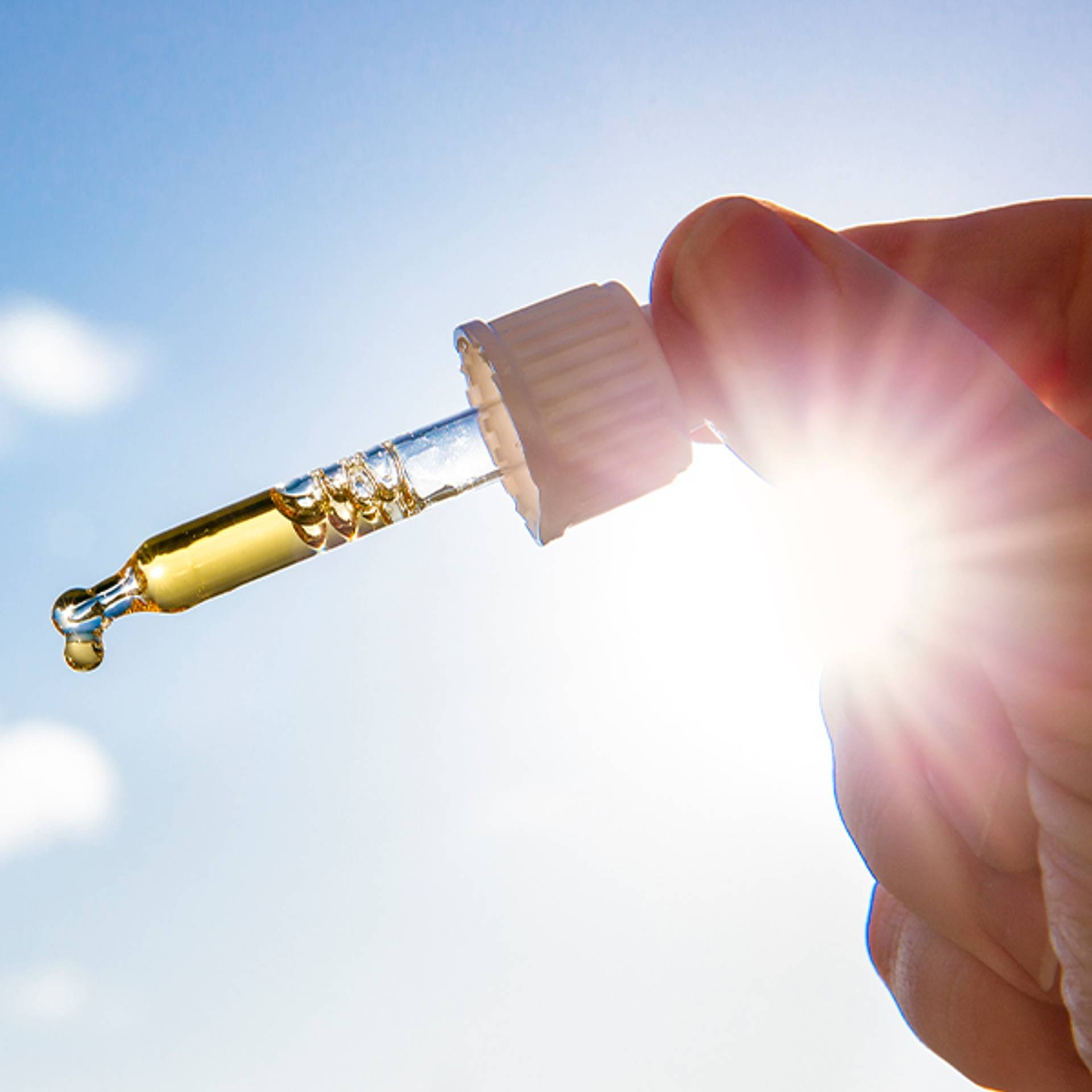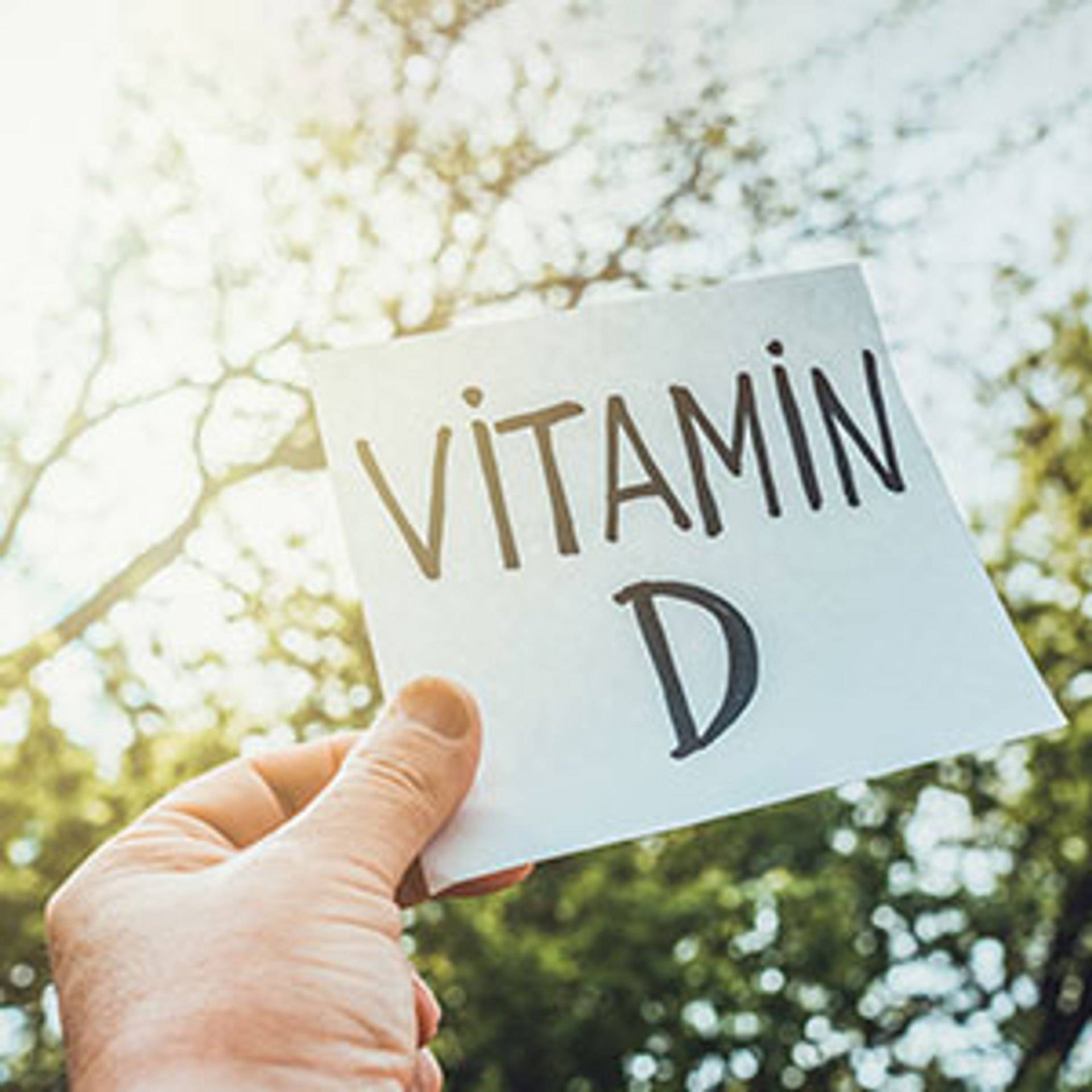
Different organizations recommend varying doses of vitamin D. For example, in cases where vitamin D formation through sunlight is deficient, the DGE currently recommends a dose of 400 IU for infants up to 1 year of age and 800 IU for children, adolescents, adults, seniors, and pregnant and nursing women.
According to vitamin D experts this recommendation is too low and only represents the minimum daily intake required to stave off rickets.

There are two ways you can optimize your vitamin D levels to fully benefit from the health benefits of this essential vitamin.
Take the following daily vitamin D dose as a dietary supplement:
Babies up to the first year………..400 IU
Children one year and up……….1000 IU
Adolescents……….……….…………..1000 IU per 12 kilograms of bodyweight
Adults……….……….……………………5000 IU*
Pregnant women……….……….…..4000 IU bis 6000 IU
* based on an average body weight of 70 kilogram
This dose is recommended by experts in order to achieve the optimum 25(OH)D value of 60 ng/ml and permanently maintain this level.
Since this recommendation for vitamin D lies within the safe zone and this dose has never resulted in side effects, it can be taken without requiring a blood test.
This dose can be taken daily throughout the year, except for individuals who spend 15-20 minutes in the sun (exposing at least the naked upper body to the sun, preferably the whole body) during the early afternoon three times or more per week. For these individuals, the exposure to sunlight means the body produces sufficient vitamin D in the skin.
There are numerous recommendations which make taking vitamin D unnecessarily complicated. But if you follow the above dosage and have your 25(OH)D tested after 3 months, you'll see how easy it can be to get your vitamin D levels into the optimal range.
Important note: If you regularly take vitamin D in form of a dietary supplement, for low vitamin D intake you should additionally take 100 mcg of vitamin K2 daily or, if you take 5,000 IU of vitamin D or more per day, take 200 mcg of vitamin K2 additionally each day, to ensure that calcium absorbed by vitamin D is not deposited in the arteries.
To make it as easy as possible to take your dose, we offer three products that combine natural vitamin D with natural vitamin K2:
1. Vitamin D 5000 IU plus Vitamin K2 200 mcg capsules
2. Vitamin D 2500 IU plus Vitamin K2 100 mcg capsules
3. Vitamin D 1000 IU plus Vitamin K2 45 mcg lozenges for children
These products are ideal to achieve and maintain optimal vitamin D and K2 levels, regardless of your age.
If you suffer from a disease that makes it absolutely necessary for your vitamin D level to be in the optimal range, or if you want to know your exact level, then you should have your vitamin D level measured. The blood test to measure your vitamin D levels is called the 25(OH)D blood test.
The result of the blood test helps determine how much vitamin D you should take in the form of vitamin D capsules or vitamin D drops, etc., or whether you should increase your exposure to the sun in order to build up an optimal vitamin D level.
Since everyone absorbs vitamin D differently, the 25(OH)D value may develop differently. This means that not ever person will achieve exactly the same 25(OH)D level in their blood even if they take the same dose of vitamin D.
The following recommendations represent guidelines on how your vitamin D blood levels could increase when taking the respective amount of vitamin D. Therefore, this information should not be regarded as a guarantee for the specified values.
About 3 months after you begin taking your dose, you should have your vitamin D level re-measured to check on things. Once you have the result, you can assess how your vitamin D level has changed during the time you've been taking it, as well as to what extent the dose should be adjusted.
Here you'll find dosage recommendations for the intake of vitamin D in form of a dietary supplement, depending on the respective 25(OH)D value. The recommendations are based on the findings of Dr. John J. Cannell, a vitamin D expert and founder of the Vitamin D Council organization.
The given vitamin D dose may be slightly rounded up or down in order to take the recommended amount using the available vitamin D preparations.
This value indicates severe vitamin D deficiency and represents significant risk to health. This low vitamin D level means that calcium cannot be sufficiently absorbed into the blood, which may lead to osteomalacia. This may also affect muscle strength and motor coordination.
If your vitamin D blood level is e.g. 25 ng/ml or higher and you want to increase them, you can take the following amount of vitamin D (based on an average body weight of approximately 70 kg):
To reach the mentioned value….. take this vitamin D Dose per day:
20 ng/ml ……………..1000 IU
30 ng/ml ……………..2200 IU
40 ng/ml ……………..3600 IU
50 ng/ml ……………..5300 IU
60 ng/ml ……………..7400 IU
70 ng/ml ……………..10100 IU
Vitamin D deficiency is still present, along with increased risk of developing osteoporosis. Parathyroid hormone levels are likely to be elevated. This hormone regulates calcium and phosphorus levels in the body.
If your vitamin D blood level is e.g. 25 ng/ml or higher and you want to increase them, you can take the following amount of vitamin D (based on an average body weight of approximately 70 kg):
To reach the mentioned value….. take this vitamin D Dose per day:
20 ng/ml ……………..500 IU
30 ng/ml ……………..1700 IU
40 ng/ml ……………..3200 IU
50 ng/ml ……………..4900 IU
60 ng/ml ……………..7000 IU
70 ng/ml ……………..9700 IU
Although official sources say that this value is acceptable, in the opinion of the Vitamin D Council this still constitutes a vitamin D deficiency. However, the risk of developing health problems is low. The parathyroid hormone levels may still be elevated, resulting in disruption in calcium uptake. There is less risk of fractures compared to lower vitamin D levels.
If your vitamin D blood level is e.g. 25 ng/ml or higher and you want to increase them, you can take the following amount of vitamin D (based on an average body weight of approximately 70 kg):
To reach the mentioned value….. take this vitamin D Dose per day:
30 ng/ml ……………..600 IU
40 ng/ml ……………..2000 IU
50 ng/ml ……………..3700 IU
60 ng/ml ……………..5800 IU
70 ng/ml ……………..8600 IU
This value is officially considered to be normal. However, vitamin D experts still consider this to be too low. Still, this level of vitamin D is sufficient to ensure that calcium is adequately absorbed, making the risk of broken bones quite low.
Research has also shown that this level of vitamin D strengthens the immune system better, enabling it to fend off infections easier. However, one may need a higher level in order to get through the winter without becoming ill.
If your vitamin D blood level is e.g. 25 ng/ml or higher and you want to increase them, you can take the following amount of vitamin D (based on an average body weight of approximately 70 kg):
To reach the mentioned value….. take this vitamin D Dose per day:
40 ng/ml ……………..800 IU
50 ng/ml ……………..2500 IU
60 ng/ml ……………..4600 IU
70 ng/ml ……………..7300 IU
In the view of vitamin D experts this level means you're getting an adequate amount of vitamin D. Most people would produce this amount of vitamin D in their body if they were exposed to the sun completely naked all year at the equator. These levels are also achieved by hunter-gatherers in the bush in Africa who live a traditional way of life.
At this vitamin D level, the body can perfectly regulate calcium absorption via the adequate formation of parathyroid hormone. Breastfeeding mothers can sufficiently pass on vitamin D to their baby through breast milk.
Some studies suggest that these amounts of vitamin D are associated with a reduced risk of certain cancers and with better heart and circulation health. Research results also indicate that vitamin D levels in this range strengthen the immune system and support the body in fighting infection.
If your vitamin D blood level is e.g. 25 ng/ml or higher and you want to increase them, you can take the following amount of vitamin D (based on an average body weight of approximately 70 kg):
To reach the mentioned value….. take this vitamin D Dose per day:
50 ng/ml ……………..900 IU
60 ng/ml ……………..3000 IU
70 ng/ml ……………..5700 IU
Congratulations, your values are in the optimum range to take advantage of the numerous health benefits of vitamin D. There is currently no sufficient scientific evidence to suggest that values above 60 ng/ml offer increased health benefits. Consequently, there is no need to attempt to reach higher levels.
Take the recommended dose of vitamin D daily to maintain your vitamin D levels, as described in point 1 above. Or continue to spend the same amount of time in the sun to maintain your value.
The Vitamin D Council considers these levels to be 'normal to high'. These vitamin D levels can be achieved by exposing the skin to adequate sunlight. As a result, it is assumed that these are natural, healthy levels.
These values are only slightly above those that can be achieved naturally by exposing the skin to the sunlight. It is assumed that these values cannot be achieved without taking vitamin D in dietary supplement form. To date, no risks are known which would result from consistently high values in the range of 80-100 ng/ml.
These values are considered to be too high, but are not classified as harmful to health. Nevertheless, you should reduce your 25(OH)D value to below 100 ng/ml. To achieve this, simply stop taking vitamin D in dietary supplement form and do not sunbathe. After roughly 3 months, have your 25(OH)D level retested. After your Vitamin D value is back in the normal range, adjust your vitamin D intake accordingly.
These values could harm your health. You should therefore take steps to reduce your 25(OH)D value to below 100 ng/ml. To achieve this, simply stop taking vitamin D dietary supplements and avoid sunbathing. After roughly 3 months, have your 25(OH)D levels retested. After your Vitamin D value is back in the normal range, adjust your vitamin D intake accordingly.
Because vitamin D is fat soluble, there have been repeated warnings against overdosing. In 2002, the Scientific Committee on Food of the European Commission released its position the safety of vitamin D.
The report stated that a daily intake of 2,000 IU (50 mcg) for adolescents, adults, pregnant women and breastfeeding mothers, and 1,000 IU (25 mcg) for children may be taken for extended periods during the first 10 years of life with no risk of side effects and without medical supervision.
Most experts consider a daily intake of up to 5,000 IU (125 mcg) of vitamin D to be safe for adults.
Since direct sunlight produces 10,000 IU (250 mcg) of vitamin D in the human body, this may be the physiological upper limit.
Since vitamin D is potentially toxic, the state-approved limit is 50 mcg (2.000 IU). However, this is a conservative limit and is likely 5 times too low.
Known cases of vitamin D toxicity with hypercalcemia in which the 25(OH)D concentration and vitamin D dose are known all point to an intake of 40,000 IU (1,000 mcg) a day or more.
Excessive intake of vitamin D can only occur by taking dietary supplements. But one would have to take some 40,000 IU (1000 mcg) per day for several months to cause vitamin D overdose.
One-time massive-dose therapy involving high doses do not result in an overdose of vitamin D, even at doses in excess of 100,000 IU.
The symptoms of vitamin D intoxication include nausea, high calcium and phosphate levels in the blood, irregular heartbeat and kidney stones.
Recommended products
Related blogs

How to combine vitamin D and vitamin K properly
Recent studies clearly demonstrate that vitamin D3 and vitamin K2 are essential to good health. Deficiencies in both these vitamins are extremely common, which is why more and more people are taking vitamins D3 and K2 as a daily dietary supplement.
It's very important to know that if you take vitamin D3 regularly over a long period, you definitely need to take vitamin K2 as well. This raises the question of how these two key vitamins should best be combined in order to promote health and vitality.

Vitamin D: Vital for health
Vitamin D ensures healthy bones and is involved in a variety of metabolic processes in the human body. In contrast to all other vitamins, the need can't be met through nutrition alone; and a lack of the vitamin can cause serious illnesses. An adequate supply of vitamin D is therefore important.

How to determine the Vitamin D3 level
You can measure your vitamin D levels by using a blood test to determine if you have enough vitamin D in your body. In fact, not the active form of vitamin D is measured, but the concentration of 25(OH)D (25-hydroxyvitamin D) in the blood.
The 25 (OH)D value is a precursor of vitamin D, in which form is is transported in the blood. If necessary, this form is converted into the active form of vitamin D (calcitriol).
The 25 (OH)D value shows how much vitamin D you got through nutrition or produced during sun exposure. But this value does not tell you anything about your vitamin D levels throughout the year, which will vary depending on the sun exposure and vitamin D uptake from food.
The half-life of 25(OH) Vitamin D is 2 month. This means, that the vitamin D level will fall to half of its value, provided that you no longer get any vitamin D at all.